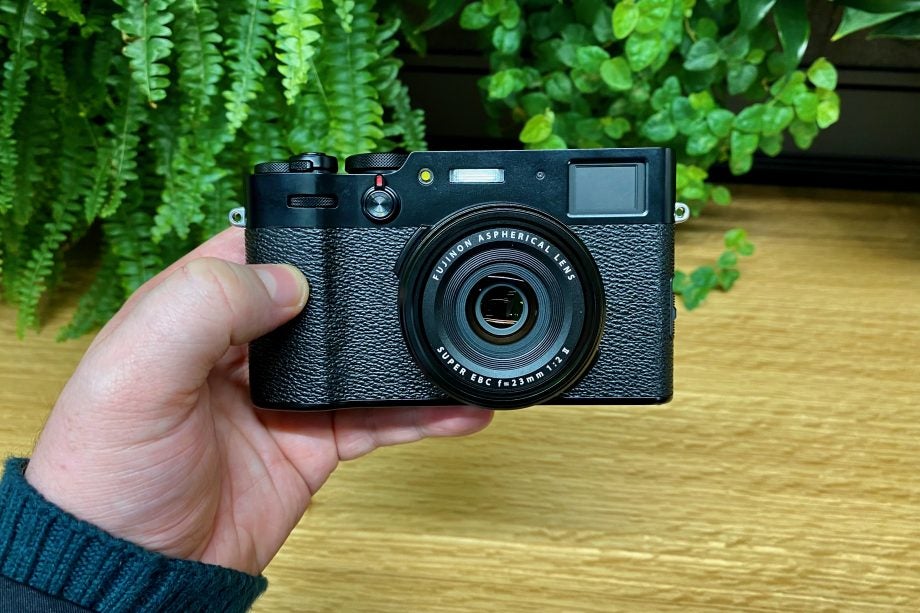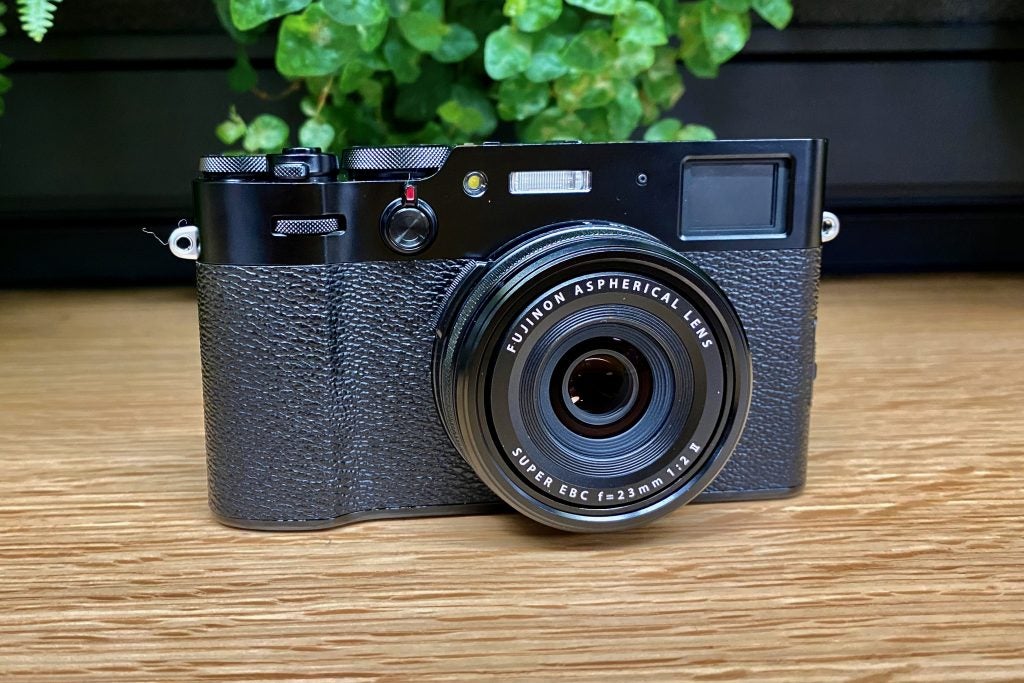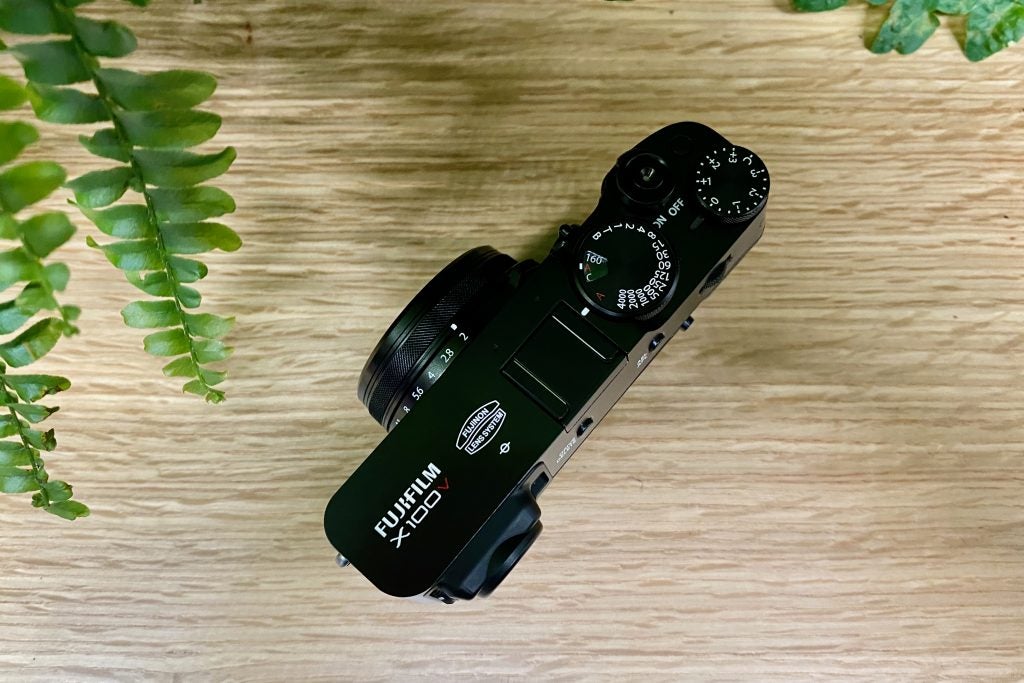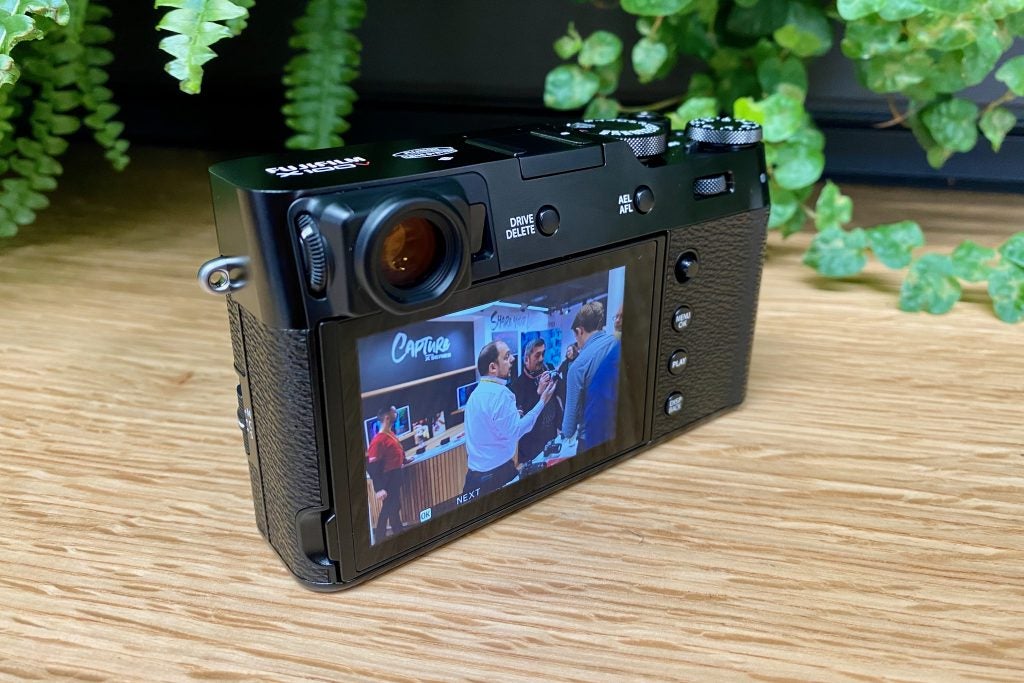First Impressions: Fujifilm X100 V Review
First Impressions: Fujifilm X100 V
Improved in every way?

First Impressions
I can’t see anyone picking up the X100 V and not being immediately wowed by its charm. Not only is beautifully and thoughtfully designed, but it fixes many of the issues with the previous version. The new sensor and lens combination should lead to some stunning snaps, the tiltable LCD is easy to ignore if you wish and the general visual upgrades make for an even better looking camera.
Key Specifications
- Review Price: £1299
Three years after the launch of the X100 F, Fujifilm has finally announced the successor to one of its most exciting cameras. The Fujifilm X100 V isn’t a complete rethinking of the series, but it adds a bunch of new additions and makes some very welcome changes to the design.
The X100 line, which now spans five models over ten years, is an utterly gorgeous piece of kit and it seems to hold a special place for many Fuji fans. This new model packs in a new sensor, new lens and a rear LCD that tilts. After spending a few hours with the camera at a recent Fuji launch event, it certainly feels like it fixes many of issues people had with the X100 F.
One of the bigger improvements this time around is the new sensor. You’ve now got a 26.1-megapixel X-Trans 4 CMOS APS-C sensor, which is the same as the X-T3, XT30 and XPro3. I spent some time shooting with the camera, however, the limited demo area made it hard to judge the quality of the shots – I’ll save those opinions for the full review.
Paired with the new sensor is some new glass in the form of a fixed 23mm f/2 lens which Fujifilm said is enhanced for better resolution and lower distortion. It retains the same 4-stop internal ND filter, too.
There have been some software additions, including on-camera HDR and a couple more of Fujifilm’s excellent film simulation modes. The HDR stuff is interesting and it did seem to make a notable difference in some of the demo shots I took. You’ll definitely notice the difference if you’re used to shooting on phones that do a lot of HDR work – but of course the general photo quality is far superior.

The X100 V firmly feels like a camera the majority of people are going to be using for stills, but there are still some key video upgrades too. You can shoot 4K 30fps, 10bit colour if you use the HDMI port (or 8bit colour internally) and these can make use of the film simulations.
While performance verdicts will have to wait until I have spent a lot longer with this camera, it’s clear already just how beautifully crafted the Fujifilm X100 V is. There is swathes of retro chic here, without feeling cheesy or forced. The silver model (it also comes in a stealthy black) is constructed from aluminium and the top now has a more matte finish. The control dials on the back have been cleaned up too, with all your navigation done via the small – and quite fiddly – joystick or the touchscreen. A slightly controversial update seems to be the switch to a tiltable touchscreen, however it’s so well done and sits flush to the back that if you don’t want to use it you’ll barely notice it’s there.
Another highly requested feature for the X100 V was weather sealing and it is here – sort of. While the camera itself isn’t officially weather resistant, you can add in a sold-separately protection ring that makes it so. It looks like this extra attachment will cost you £49 if bought with the camera, or £99 otherwise. Considering how fun this camera will no doubt be to shoot with in the rain – and how Fujifilm’s excellent film simulations look when you’re shooting in wet conditions – I can’t see many deciding against this addition, and it seems something of a shame it wasn’t included.

One of the features that make this fairly compact camera so fun to shoot with is the OVF (optical viewfinder) which can quickly be transformed into an EVF (electronic viewfinder) if you want a more accurate representation of your shot. The EVF has been updated to match the XPro3, with a 3.69 million dot OLED.
Fujifilm claims the battery life is good for 450 shots and there’s now a USB-C connector on the side for charging. While you can still remove the battery, the camera doesn’t come with a dedicated battery charger, so you’ll either have to buy this separately or use one from a previous version.

Fujifilm X100 V – Price and release date
The silver version of the X100 V should arrive towards the end of February, with the black model arriving in March. UK prices are £1299, with the US price set at $1399.
Fujifilm X100 V – Early verdict
I can’t see anyone picking up the X100 V and not being immediately wowed by its charm. Not only is beautifully and thoughtfully designed, but it fixes many of the issues with the previous version.
The new sensor and lens combination should lead to some stunning snaps, the tiltable LCD is easy to ignore if you wish and the general visual upgrades make for an even better looking camera.


